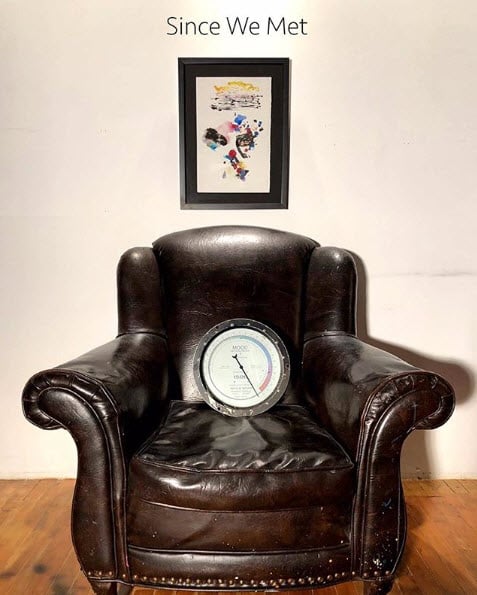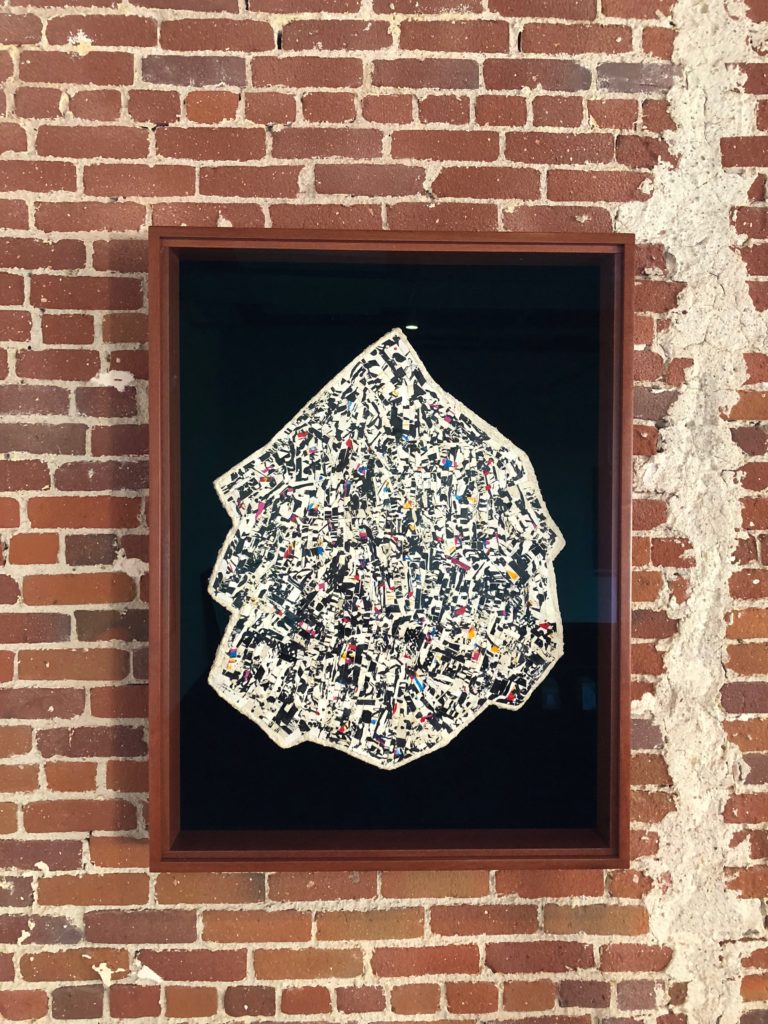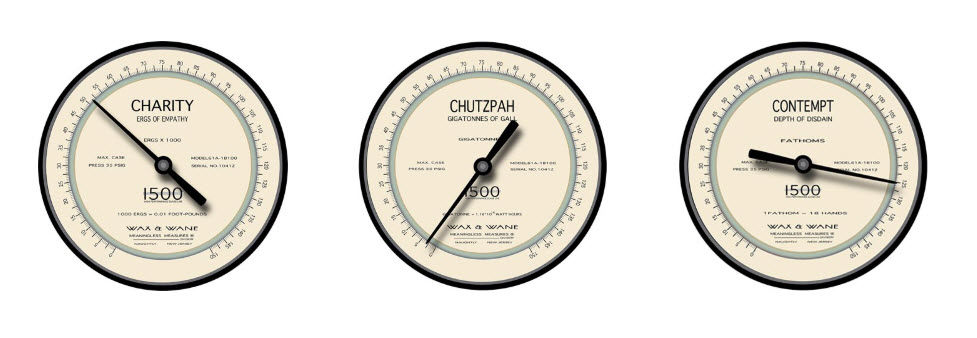Art World
Who Needs a Rorschach Test? This Artist Mounted a Joint Exhibition With His Therapist
Michael Gittes suffered from debilitating bipolar mania. Then he met Dr. Lewis Engel and everything changed.

Michael Gittes suffered from debilitating bipolar mania. Then he met Dr. Lewis Engel and everything changed.

Janelle Zara

At “Since We Met,” a new exhibition in a Downtown Los Angeles dance studio, rows of mirrors fragment the space into a disorienting collage. The reflective surfaces, according to artist Michael Gittes, are a point of reconciliation.
“For a long time, it was difficult to look in the mirror,” he says, following a painful and protracted bout of bipolar mania in 2008. Having spent the better part of that year manic (including a couple days institutionalized), he describes the episodes as a total betrayal of the mind. “Because I didn’t really know who I actually was, I also couldn’t trust whatever my thoughts were when I looked in the mirror. My morals and my ethics were different. I was a fully different person.”
At a certain point, he had stopped speaking English. Following his medication and subsequent release from the hospital, Gittes’s speech patterns remained largely incoherent until he met his current psychiatrist, Dr. Lewis Engel, who had formerly been an artist himself. Engel was able to interpret the seeming gibberish into references to colors, which in turn correlated to Gittes’s mood.
“I felt so isolated at the time, and it was like meeting someone who could speak my language,” Gittes says. “He brought me back to English.”
“Since We Met,” on view May 5–10, marks the 10-year anniversary of the rehabilitation they’ve been undergoing together, in which the making and discussion of art, alongside traditional medication, have played a pivotal role.
In the tradition of so-called Outsider art, Gittes immersed himself in painting as a form of therapy; the physical, hands-on processes provided an escape from his own thoughts. There are abstracted images of nature in which mirrors, cut into the silhouettes of pyramids or outstretched hands, reflect back at the viewer. There are also portraits that were drip-painted using paint-loaded syringes, and tiled patterns rolled out of the pulp he made from tossing the works he doesn’t like into a blender.

Micheal Gittes, This is My Costume (2018). Photo courtesy of Eli Bronner.
“As soon as I feel comfortable with a process, I move on to another,” Gittes says. “My favorite pieces are where I’m trying out a new process for the first time.” (He recently submitted his very first experiment in film, footage of Michael Jackson overlaid with Frank Sinatra’s “Fly Me to the Moon,” to the London National Portrait Gallery. While it’s not on view in Los Angeles, it will be exhibited next to works by Jeff Koons and Isa Genzken there in June.)

Lewis Engel, three dials from “Meaningless Measures” (2018). Screenshot via the artist’s website.
This joint exhibition also features works of Engel’s, a soft breach of the doctor-patient code of ethics that limits their interactions to formal sessions. (Discussing their sessions would be a full breach; the doctor was not present when artnet News visited the show.) In Dr. Engel’s absence, Gittes describes his doctor’s work as a “measured” approach to mental illness in contrast to his escapism. Engels takes the dials of vintage scales and replaces their metrics with tongue-in-cheek units of mood—Chutzpah, measured in “giagatonnes of gall,” or Denial, as in “head depth in sand.” He calls the series “Meaningless Measures.”
Gittes says an integral part of his sessions with Dr. Engels has been the discussion of their respective works, which they show each other via smartphone and iPad. The artist finds that describing his paintings is sometimes easier than articulating his feelings. There’s a piece in the show that he painted in the wake of his father’s death last year, entitled Sunset for a King. A mouthless figure with two eyes sits in a field of dark velvet with radial stripes of gold emanating from its back. Gittes painted this symbol of his late father directly onto velvet “because I wanted to have him comfortable,” he says. “Even when he’s gone the rays will continue to shine.”
“Since We Met” will be on view from May 5–10 at 222 East 16th Street, Los Angeles, California. The exhibition is open from 6 p.m. to 10 p.m.